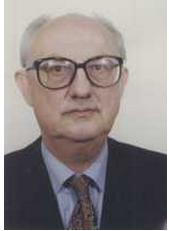Two CFR-Seminars on Divorce: 1981 and 2012
Some semantic remarks
The XIXth international CFR-Seminar on “Divorce and Remarriage†was organized at the KU Leuven, September 1981. The same group FaPOS (Family and Population Studies) hosted at the same location, same season, September 2012, the 47th CFR-Seminar under the style of “New Family Forms following Family Dissolution: consequences in/on Postmodern Societyâ€.
As stated by the organizer, Prof. dr. Koen Matthijs, the aim was “to look backwards and examine what has happened in society, but also in our field of family sociology†during the time span of three decades. Evaluating the latter seminar we remember what Prof. Reuben Hill, a founding father of CFR, said while recalling the developments between the 50’s and the 80’s (also three decades): “We have come a long wayâ€. And indeed, in terms of theory (e.g. from an institutional to an interactional/systemic approach), in terms of methods and techniques (e.g. from descriptive to analytical frames of reference) as well as to the building of research papers (e.g. from single to multiple authorship) we are living in a new area.
Yet some old issues remain, as is reflected by semantics. Only two examples:
a) the term “family dissolutionâ€; b) the term “stepchild/father/motherâ€.
Family dissolution
In some instances the adequacy of the term “family dissolution†as referring to “divorce†can be put into question on two accounts: theoretical and empirical.
a) from a systematic perspective
If one focusses on the family as a system constituted of three sub-systems (1) the partner subsystem; (2) the parental subsystem; (3) the sibling subsystem, a divorce results in the dissolution of one subsystem only, the two other subsystems are not dissolved.
b) from a living arrangement/(household) perspective
If one looks at a post-divorce rotating living-arrangements (as described in the latter seminar) in which children stay with one parent during one time-period (e.g. a week), with the other parent the subsequent time-period (e.g. a week), then the parent-child (sub)system certainly is not dissolved. The living arrangements are changed in order to maintain the parent-child relationship.
Even in less clear-cut post-divorce living arrangements, legal provisions as well as actual practice are characterized by a tendency of being increasingly geared at and instrumental in maintaining and furthering the parental as well as the sibling bonds.
Conclusion: in some Western societies one can observe two tendencies: (a) a growing autonomy of the subsystems in the family; (b) the weakness of the marital subsystem (turnover of partners), is accompanied by a simultaneous strengthening of the parent-child subsystem. Or in more general terms: a strengthening of the kinship structure.
Step relationships
The term “step†is confusing since it refers to replacement. The most popular term “stepmother†as featured in fairy tales refers to the situation after death, not after divorce. Rather than a term referring to replacement, we need a term adequately representing additional positions in the family and/or household.
In the post-divorce situation, after the dissolution of the marital/partnership relation, the child still has both his/her father and his/her mother as parents. As stated above, the child (he/she) increasingly has the opportunity to maintain these relationships. Simultaneously the child can be confronted with a new position: the partner of his father/mother (or the new partners i.e. a new partner of his mother and a new partner of his father). The new partner(s) of the father/mother do not represent a replacement but constitute an additional position.
Conclusion
In case of turnover of partners in the marital subsystem, an additional subsystem can be identified within the family: the relationship between the child and the new partner of the mother/father. If both parents have new partners, then the new subsystem will encompass two new relationships: one with the new partner of the mother, one with the new partner of the father. Each conveying the continuity of the relationship father-child/mother-child. In more general terms: it clearly marks the separation between family and household.

